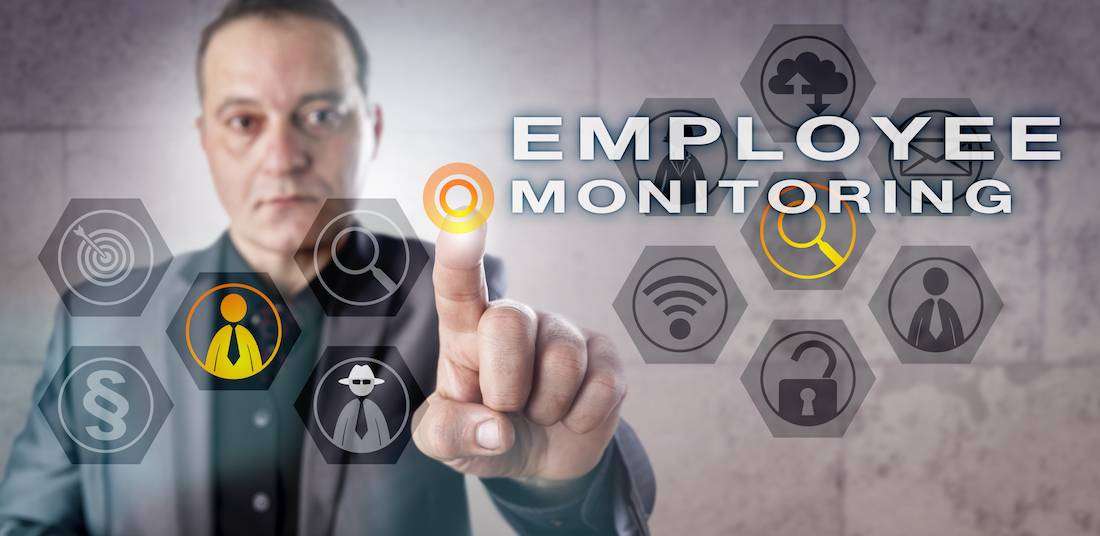Most workplaces are not public places, and so workers are afforded protections from unnecessary intrusions into their private lives (see Article 8 of the European Convention of Human Rights).
Yet, the employer must have certain rights in order to gauge the effectiveness of their workers. It is the employer’s money, and dishonest employees deserve to be terminated. The EU legislators have recognised this and have been striving to find the balance between the financial interests of the employers and the privacy interests of workers.
The Barbulescu Case
Employers have various options for monitoring on their disposal. They can use security cameras, computer, e-mail, cell phone and even keystroke monitoring.
The legality of these methods has been undetermined, with some courts affirming the employers’ rights to monitoring, while others argued for employee privacy. The most recent example is the Barbulescu case.
Bogdan Barbulescu, a Romanian software developer, had been fired in 2007 for chatting with his family on company time via Yahoo Messenger. The case was taken by the European Court of Human Rights after the Romanian courts dismissed his case. Initially, in 2016, the ECHR also found that there was no breach of Article 8 of the Convention – only to reverse their decision this September on appeal.
As it turns out, Mr Barbulescu’s rights to privacy have been infringed by unlawful monitoring and thus any information obtained by such intrusive snooping could not be admissible in court. The Grand Chamber of the Court agreed and Barbulescu won – after 10 years of legal battles.
Legal Ramifications
The outcome of the case mentioned above is good news for all workers. Workplace monitoring is still legal, but employees have the right to be notified before any monitoring takes place, and their explicit consent is required.
In other words, you as an employer must inform your employees about the fact that you are being monitored and you must consent to that before any kind of monitoring can take place. Covert monitoring is only allowed in limited scope in cases where criminal activities have been clearly identified and evidence is being collected. Note that mere suspicion that criminal activities are taking place is not enough to justify covert monitoring.
If the employees’ e-mails are being monitored, individuals from outside the company with whom they are communicating also must be legally notified of that fact. A disclaimer can be attached to every outbound e-mail, for example.
The new privacy legislation that will come into force in the entire EU on 25 May 2018, the General Data Protection Regulation, also does not contain explicit references to workplace monitoring. The matter has been left to individual Member States to decide.

Excessive monitoring by employers is often perceived as a sign of distrust.
Practical Considerations
Even if monitoring does result in findings that the employee has been using the Internet for private matters, it is likely that this fact does not give the employer enough grounds for dismissal. The case law is very inconsistent across the EU Member States, however.
In any case, must explicitly notify employees of the fact that you monitor their communications – otherwise, such evidence would be unlawfully gathered. Whenever monitoring is employed, employers should collect as little data as possible, and make sure only the necessary information is retained.
You should allow for and expect a limited and occasional use of workplace resources for personal purposes, but still, you’re within your rights to terminate repeat and persistent offenders. Do note that workplace monitoring is not the only tool at your disposal. You should employ other metrics that gauge workers’ productivity. Even the more restrictive EU employment rights permit the employers to fire underperforming employees.
The Right to Privacy and Video Surveillance
Workplace cameras can be employed for technical and manufacturing purposes, but some companies have introduced a practice of monitoring their workers through the use of CCTV systems.
The use of such systems can undermine the confidence of employees in their employers. It undermines trust and is likely to strain the relationship between the company and its workers. Still, the use is spreading – some retail chains in Germany have experimented with it, and received a lot of flak for it.
The main aim of workplace monitoring is to increase productivity and prevent theft by employees. Some other reasons, more beneficial for the employees, include workplace safety and health monitoring.
Employees have a right to privacy, even in the workplace. Interests of the employer have to be substantial in order to warrant the installation of CCTV systems, especially in more private areas of the company building. While setting up a video surveillance system in the lobby is quite reasonable, a camera in the office break room would be extremely difficult to justify.
Generally, limited surveillance for cases where the employer has a legitimate interest is allowed. This could include surveillance of expensive equipment or during dangerous tasks in the interest of workers. However, even then, surveillance should never be permanent and its scope should be as small as possible.
If you decide to install a video monitoring system, you should inform the employees of its purpose and provide adequate notification. If it is used for other (illegal) purposes, like workplace monitoring and evaluation, the you open yourself to lawsuits.
The use of covert video surveillance is prohibited, unless when criminal activity is suspected as part of an ongoing investigation. Again, you should keep the privacy of other workers in mind by evaluating the potential risks and benefits – even covert surveillance is prohibited in bathrooms and changing rooms, for example.
You employees (and other individuals) have the right to make a subject access request (‘subject data information’ in Germany) demanding a copy of any and all footage relating to them. You are legally required to provide this information when requested.
What Lies Ahead?
The key to fruitful relationships is mutual trust, and the same applies to the worker-employer relations. The best bet not to get tangled in the murky issue of monitoring is not to install it in the first place. Aside from select few applications, such as employee safety, monitoring is bound to cause resentment and reduce productivity.
The minefield of inconsistent regulations and case law is troubling as well, but the recent decision in the Barbulescu case is a step towards strengthening worker’s rights and ensuring the consistent application of legal principles.







